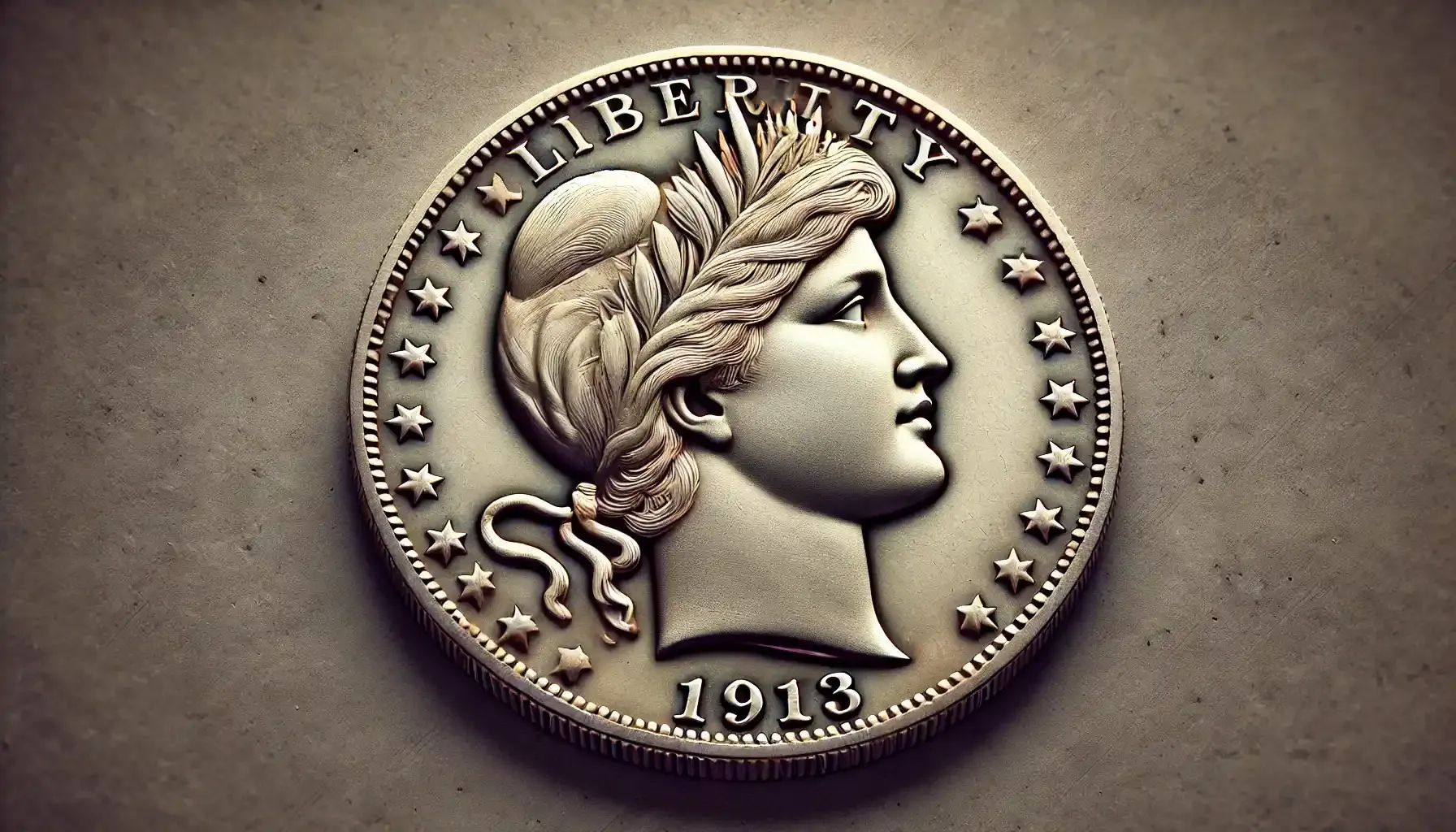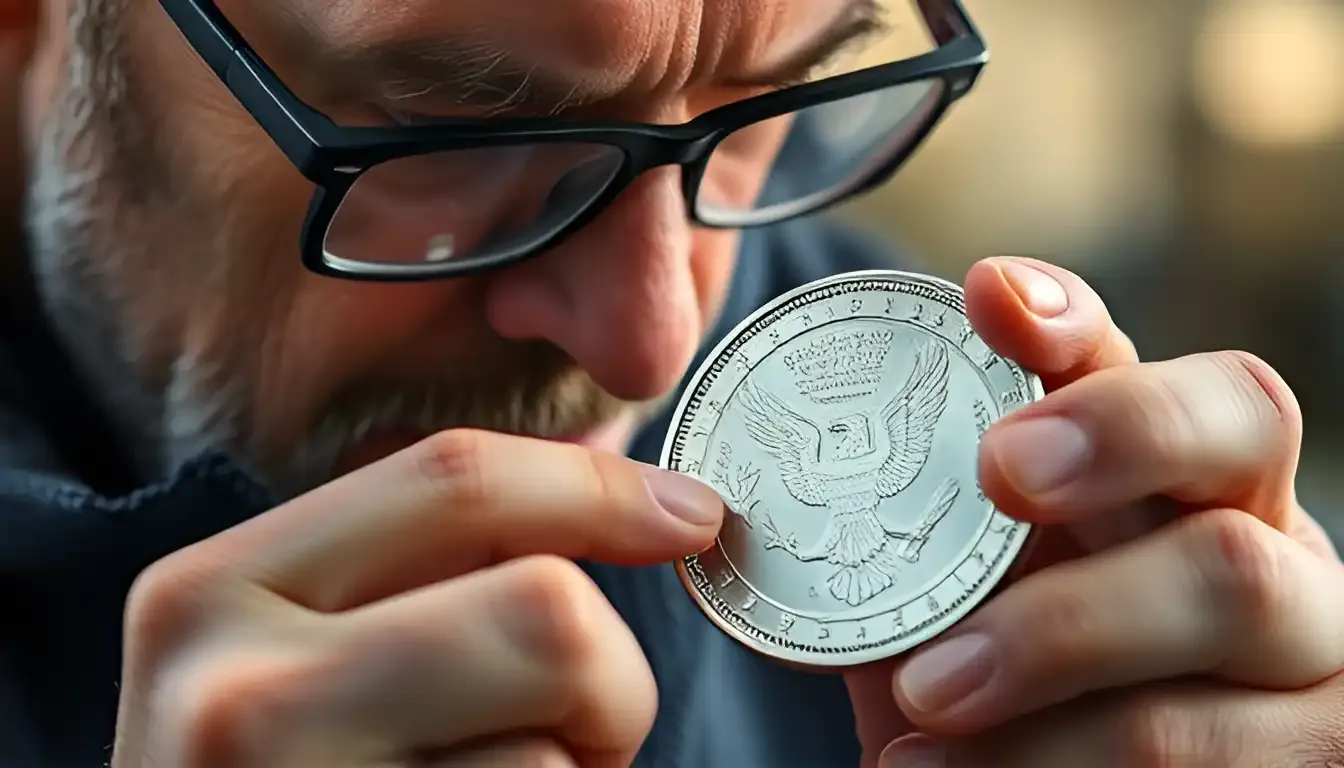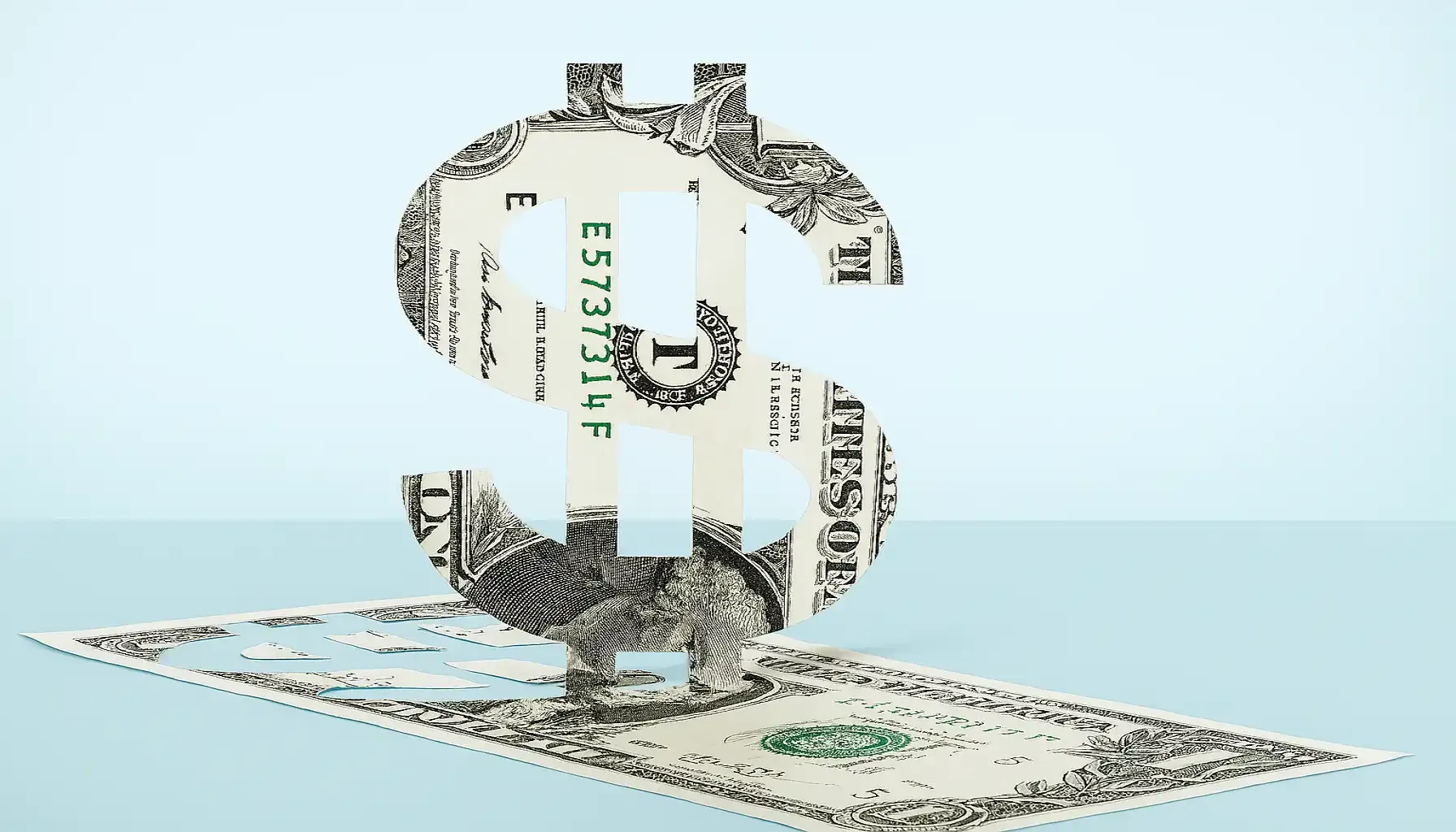Contents:
What makes the coins from 1913 so interesting? Is it the classic American design? Their link to a turbulent pre-war economy? Or maybe it’s just how rare and valuable they are today. Whatever the reason, 1913 coins — especially the Half Dollar and the Dollar — have become special for early 20th-century U.S. numismatics.
If you want to buy, sell, or just stare longingly at these coins, this guide breaks down what they are, what they’re worth, and why collectors are still chasing them more than a century later.
So, let's get into the history, details and unique features of pieces, check the value of these coins and finally understand where the myths end and the truth about these coins begins.
Quick Specs: 1913 U.S. Half Dollar and Dollar Coins
Coin Type | Composition | Weight (g) | Diameter (mm) | Designer | Mint(s) |
1913 Half Dollar | 90% Silver, 10% Copper | 12.5 g | 30.6 mm | Charles E. Barber | Philadelphia (no mintmark) |
1913 Dollar (Pattern only) | 90% Silver | ~26.7 g | 38.1 mm | Charles E. Barber or George Morgan (prototypes) | Pattern (not issued) |
America in 1913: A Turning Point in U.S. Numismatics
Step back into 1913, and you’ll find a United States on the edge of modernization, uncertainty, and innovation — both politically and numismatically.
The Political & Economic Backdrop
Woodrow Wilson had just taken office as the 28th President.
The Federal Reserve Act was being drafted — changing how the U.S. managed money forever.
The 16th Amendment, legalizing federal income tax, had just been ratified.
The U.S. Mint was preparing for a stylistic transition — coins were evolving from functional to artistic.

This shift from industrial minimalism to Art Nouveau was already in motion within U.S. coinage, and 1913 became a symbolic pivot year.
What Coins Were Made in 1913?
In 1913, you could find the following in your pocket:
Denomination | Type(s) | Designer | Notable Change |
1 Cent | Lincoln Wheat Cent | Victor D. Brenner | No major change |
5 Cents | Liberty Head & Buffalo Nickel | Charles Barber & James E. Fraser | Mid-year design transition |
10 Cents | Barber Dime | Charles E. Barber | Final stretch of the series |
25 Cents | Barber Quarter | Charles E. Barber | Same design since 1892 |
50 Cents | Barber | Charles E. Barber | Set to be retired soon |
1 Dollar | None issued | — | Morgan ones halted in 1904 |
Gold Coins | Indian Head & Saint-Gaudens | Bela Lyon Pratt & Augustus Saint-Gaudens | High artistry in circulation |
1913 Barber Half Dollar: The Last of a Dying Style
It belongs to the final years of the Barber design era — a style introduced in 1892 and replaced just two years later in 1915 by the Walking Liberty. Charles E. Barber’s design wasn’t exactly loved in its time, but today it’s appreciated for its historical charm and classic look.
The design was thought to be quite interesting but rather discreet (the design elements do not overload the coin's styling).

Just like before (e.g., on the 1916 D Mercury dimes), the obverse shows the profile of Liberty yet with a crown of laurel The year 1913 was a milestone for American numismatics, surrounded by myths and legends.
The piece, despite its small mintage, exists and remains a popular coin among collectors, while the silver one of this year is only a myth supported by rumors and speculations.
Mint & Rarity
Only Philadelphia minted half dollars in 1913 — there’s no 1913-D or 1913 S Barber Half Dollar.
1913 Barber Half Dollar Value Table
Grade | Value (USD) | Comments |
G-4 (Good) | $20 – $30 | Well-worn but collectible |
VG-8 | $35 – $45 | Visible Liberty and reverse wreath |
F-12 | $50 – $70 | Solid details; better eye appeal |
VF-20 | $80 – $100 | Sharper devices |
EF-40 | $130 – $160 | Crisp legends and details |
AU-50 | $180 – $220 | Nearly uncirculated |
MS-60 | $300+ | Uncirculated; minor marks |
MS-63 | $450 – $600 | High-end for type |
MS-65 | $1,000+ | Rare in Gem grade |
Tip: Look for well-struck examples with clean fields — even circulated ones with good eye appeal command premiums. However, always consult specialists before any purchase as the 1913 half dollar value may change.
1913 Liberty Head Dollar: The Coin That Never Was
There’s no official U.S. dollar coin released for circulation in 1913. However, this is where things get interesting…
So what’s the 1913 silver dollar value?
There are two categories that fuel the mystery:
Pattern Coins:
A few 1913 pattern pieces were struck for internal use or design trials.
These include Liberty Head and Morgan-style patterns (aka 1913 Morgan silver dollar).
Extremely rare; most are in museums or elite collections.
Fantasy Issues or Private Mint Tributes:
Some coins labeled “1913 Dollar” are modern commemoratives or replicas.
Sometimes sold as “collectibles,” they are not legal tender or U.S. Mint products.
Often made of silver or silver-plated base metals.
How Much Is a 1913 Dollar Worth Today?
Coin Type | Estimated Value | Notes |
1913 Pattern (Liberty) | $25,000 – $75,000+ | Rare; known in collector archives |
1913 Pattern (Morgan-style) | $10,000 – $30,000 | Also very limited |
Replica/Fantasy 1913 Dollar Coin | $5 – $50 | Depends on metal, condition |
Important: If someone offers you a coin of this type, make sure it’s not just a token or fantasy piece.
Common Confusion: The 1913 Liberty Nickel
While this article focuses on other denominations, no 1913 coin conversation is complete without mentioning the 1913 Liberty Head Nickel — one of the rarest U.S. coins ever made (only 5 known). It's frequently mistaken for a dollar coin because of its size and fame.
If you're wondering why a coin collector is fainting over a "1913 coin," chances are, it's that nickel, not those described in the article.

Authentication Tips
Before buying or selling a 1913 coin, especially one that claims to be a rare one:
Weigh the coin (should match official U.S. Mint specs)
Check diameter
Verify the edge (reeded, plain, etc.)
Use tools like Coin ID Scanner to:
Instantly identify it
Estimate market value
Catalog your numismatic collection

Final Thoughts
The 1913 half dollar is a piece of monetary history — the last breath of the Barber era, modest yet increasingly collectible. And while a 1913 dollar coin won’t be found in your pocket change, the whispers of its pattern versions and fantasy mints still echo through the collector world.
If you're ever offered a "1913 silver one," do your homework — and maybe call your appraiser.
And if you’re holding a 1913 Barber piece, admire it for what it is: a silver sentinel from just before the world would change forever.
And in order to know all the nuances, to easily identify and verify the market value of coins and not to get into a slip (not to buy a non-existent or counterfeit coin) collectors, historians and anyone interested can seek the help of technology like the Coin ID Scanner app that has access to the most intricate examples of numismatic art such as the Wheat Penny 1944 or the like.



